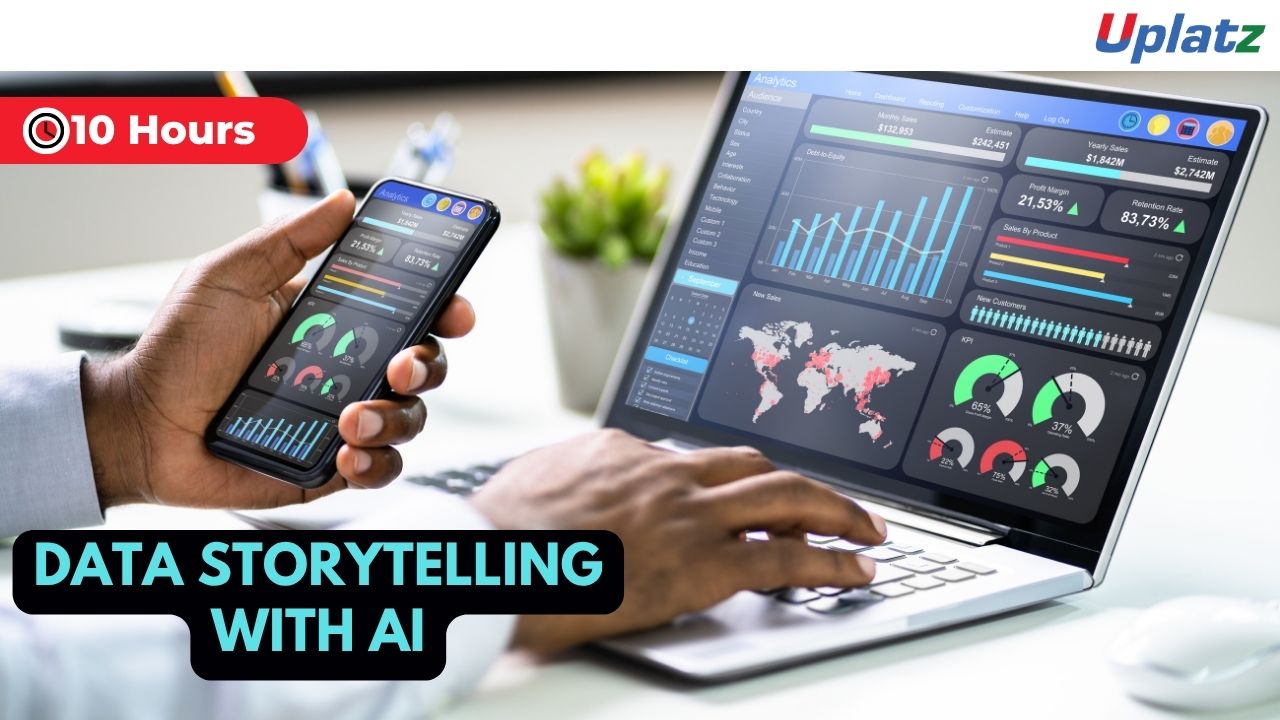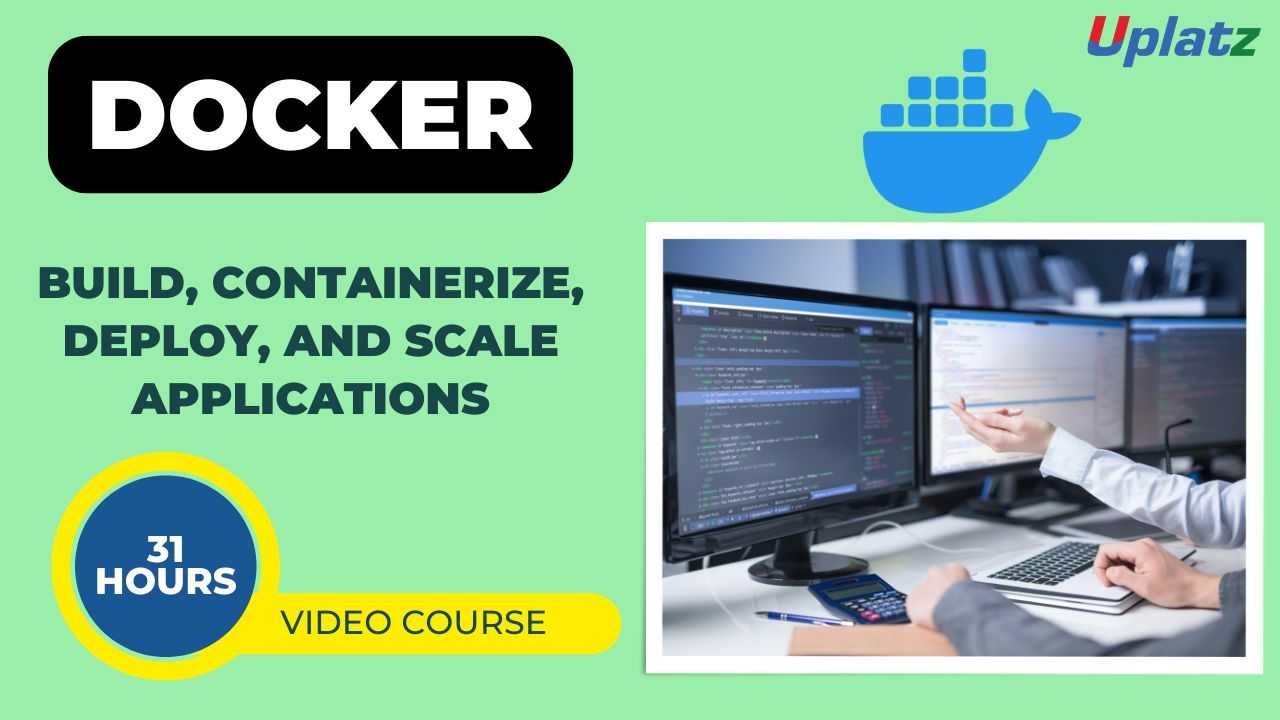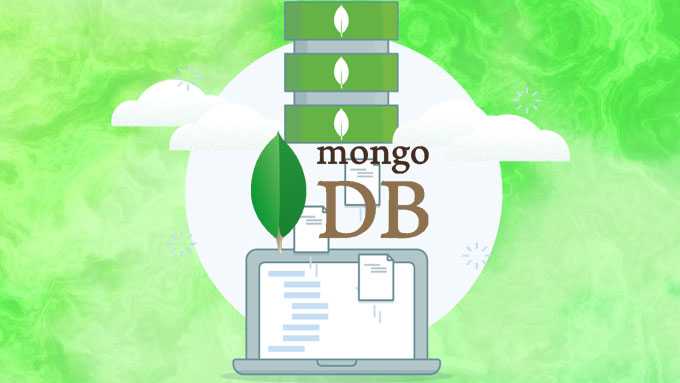Data Vault 2.0 Modeling for Modern Data Warehousing
Learn agile, scalable, and audit-friendly data modeling with Data Vault 2.0 to power modern data warehouses in cloud and enterprise environments.
Course Duration: 10 Hours
Preview Data Vault 2.0 Modeling for Modern Data Warehousing course
Price Match Guarantee Full Lifetime Access Access on any Device Technical Support Secure Checkout Course Completion Certificate 90% Started a new career
BUY THIS COURSE (
90% Started a new career
BUY THIS COURSE (GBP 12 GBP 29 )-
 82% Got a pay increase and promotion
82% Got a pay increase and promotion
New & Hot
Cutting-edge
Great Value
Coming soon (2026)
Students also bought -
-

- Data Storytelling with AI: From Dashboards to Narratives
- 10 Hours
- GBP 12
- 10 Learners
-

- Docker
- 30 Hours
- GBP 12
- 1481 Learners
-

- MongoDB
- 15 Hours
- GBP 12
- 259 Learners

Data Vault 2.0 Modeling for Modern Data Warehousing is a specialized, self-paced course designed for data architects, data engineers, BI developers, and analytics professionals aiming to build resilient, scalable, and auditable data warehouse solutions. In an era dominated by cloud platforms, real-time data ingestion, and agile delivery expectations, traditional dimensional modeling alone is no longer sufficient. This course teaches you how to model data warehouses using Data Vault 2.0, an approach that balances flexibility, historical traceability, and enterprise-wide consistency.
The course introduces the core components of Data Vault architecture—hubs, links, satellites—and explains how they align with business keys, relationships, and contextual metadata. You’ll learn to architect a raw vault and business vault, implement loading patterns, and automate repeatable transformations using ETL/ELT tools and SQL-based workflows.
You’ll also explore the extended pillars of Data Vault 2.0, including not just modeling but agility, architecture, and methodology. The course covers metadata-driven automation, operationalization, testability, and how Data Vault adapts to modern technologies like Snowflake, BigQuery, Redshift, dbt, and DataOps platforms.
Through hands-on labs and guided design sessions, you will model warehouse schemas using real-world case studies from healthcare, finance, and retail. You will also implement version control and auditing practices to ensure traceability and regulatory compliance (e.g., GDPR, HIPAA, SOX). Whether you’re migrating from a legacy warehouse or starting a cloud-native data platform, this course gives you the patterns, templates, and methodology to succeed.
What is Data Vault 2.0?
Data Vault 2.0 is a hybrid data modeling methodology that enables enterprise data warehouses to be agile, auditable, and scalable. It separates raw historical data (Raw Vault) from business logic (Business Vault) using hubs (business keys), links (relationships), and satellites (descriptive data). Unlike dimensional or 3NF models, it supports rapid change, compliance, and automation in a cloud-first data stack.
How to Use This Course
Work through each module in order, beginning with foundational Data Vault concepts and progressing to practical modeling and automation techniques. Follow along with SQL-based examples and model diagrams. Practice by building your own Raw Vault and Business Vault structures for sample domains. Use the included templates, ETL patterns, and metadata documentation structures to accelerate implementation. Apply the techniques to your existing or planned data warehouse environments.
Course/Topic 1 - Coming Soon
-
The videos for this course are being recorded freshly and should be available in a few days. Please contact info@uplatz.com to know the exact date of the release of this course.
Course Objectives Back to Top
By the end of this course, you will be able to:
-
Understand the principles and advantages of Data Vault 2.0 modeling.
-
Design and implement Raw Vault and Business Vault structures.
-
Identify and create hubs, links, and satellites from source systems.
-
Automate loading patterns using SQL, dbt, or ELT pipelines.
-
Apply metadata-driven design for scaling and governance.
-
Build auditable and testable data pipelines.
-
Integrate Data Vault with cloud data warehouses like Snowflake and BigQuery.
-
Implement role-playing satellites and effectivity satellites.
-
Compare Data Vault with star schema and 3NF approaches.
-
Design vault solutions that support agility and regulatory compliance.
Course Syllabus Back to Top
Course Syllabus
Module 1: Introduction to Data Vault Modeling
- Why traditional models fall short
- History of Data Vault
- DV 2.0 vs. DV 1.0
Module 2: Data Vault 2.0 Concepts
- Hubs, Links, Satellites explained
- The Raw Vault and Business Vault
- Core principles of agility, auditability, scalability
Module 3: Hub Modeling
- Identifying business keys
- Designing hub tables
- Loading patterns for hubs
Module 4: Link Modeling
- Modeling relationships
- Link uniqueness and granularity
- Loading rules and changes
Module 5: Satellite Modeling
- Descriptive attribute tracking
- Change detection and historization
- Split satellites and multi-active rows
Module 6: Business Vault Extensions
- Derivation rules and calculations
- PIT (Point-In-Time) and Bridge tables
- Role-playing and effectivity satellites
Module 7: Automation & Metadata-Driven Design
- Generating DDL and ETL from metadata
- Using dbt and orchestration tools
- Automation case studies
Module 8: Cloud Data Vault Patterns
- Implementing in Snowflake, BigQuery, Redshift
- Data Vault in DataOps and MLOps pipelines
- Using semi-structured data (JSON, Parquet)
Module 9: Governance, Testing, and Auditing
- Lineage and traceability
- Audit columns, record source, load date
- Testing vault models for accuracy
Module 10: Project & Design Workshop
- End-to-end modeling for a business domain
- Raw Vault and Business Vault implementation
- Audit report generation
Module 11: Interview Preparation & Deployment Best Practices
-
DV project lifecycle
-
Agile delivery of data models
-
Common anti-patterns and design trade-offs
Certification Back to Top
Upon completion of the course, learners will receive a Certificate of Completion from Uplatz, recognizing their mastery in designing and implementing modern data warehouses using the Data Vault 2.0 methodology. This certification signifies not only technical proficiency in modeling techniques but also an understanding of metadata automation, governance, and agile architecture. The certificate strengthens your professional credibility in roles requiring data platform modernization, enterprise modeling, and compliance readiness. It serves as a valuable asset for professionals pursuing roles in data engineering, data architecture, and analytics leadership.
Career & Jobs Back to Top
With increasing demand for flexible and scalable data warehousing, Data Vault 2.0 has become a crucial skill in enterprise analytics modernization. Organizations across industries are shifting from monolithic data lakes or legacy star schemas to modular and auditable vault-based models to support digital transformation, regulatory compliance, and cloud-native analytics.
By completing this course, you prepare for high-impact roles such as:
- Data Vault Modeler
- Enterprise Data Architect
- Data Warehouse Engineer
- Cloud Data Platform Consultant
- DataOps Specialist
- Analytics Architect
These roles are in high demand at Fortune 500 enterprises, cloud-native SaaS providers, financial institutions, and consulting firms. Employers such as Deloitte, Capgemini, Accenture, AWS, Snowflake, and Microsoft seek professionals who can deliver governed, scalable, and automated data warehousing solutions.
Professionals with Data Vault expertise command competitive salaries—often ₹18L to ₹40L+ in India or $110K–$180K globally. The methodology’s synergy with tools like Snowflake, dbt, and Fivetran positions certified practitioners for advanced roles in enterprise data modernization, especially as organizations adopt data mesh, DataOps, and cloud warehouse automation strategies.
Interview Questions Back to Top
1. What is Data Vault modeling and how does it differ from star schema?
Data Vault separates raw historical data from business logic using hubs, links, and satellites, unlike star schemas which integrate business logic directly.
Data Vault separates raw historical data from business logic using hubs, links, and satellites, unlike star schemas which integrate business logic directly.
2. What are hubs in Data Vault?
Hubs represent unique business keys. Each hub is a collection of identifiers with audit metadata.
Hubs represent unique business keys. Each hub is a collection of identifiers with audit metadata.
3. What is the role of a link in Data Vault?
Links represent relationships between business keys and enable many-to-many tracking in a normalized structure.
Links represent relationships between business keys and enable many-to-many tracking in a normalized structure.
4. What are satellites used for?
Satellites store descriptive attributes and historical changes associated with hubs or links.
Satellites store descriptive attributes and historical changes associated with hubs or links.
5. What is the difference between Raw Vault and Business Vault?
Raw Vault stores untransformed, auditable data; Business Vault adds derived data and business rules.
Raw Vault stores untransformed, auditable data; Business Vault adds derived data and business rules.
6. What are PIT tables in Data Vault?
Point-in-Time (PIT) tables combine satellite data for easy querying at a specific snapshot in time.
Point-in-Time (PIT) tables combine satellite data for easy querying at a specific snapshot in time.
7. How is Data Vault 2.0 agile?
It allows incremental development, easy schema changes, and metadata-driven automation.
It allows incremental development, easy schema changes, and metadata-driven automation.
8. How does Data Vault support auditability?
By storing load timestamps, record sources, and preserving all historical data, it ensures full traceability.
By storing load timestamps, record sources, and preserving all historical data, it ensures full traceability.
9. Can Data Vault be implemented in cloud platforms?
Yes, using Snowflake, BigQuery, Redshift, and tools like dbt or Matillion for orchestration.
Yes, using Snowflake, BigQuery, Redshift, and tools like dbt or Matillion for orchestration.
10. What are common challenges in implementing Data Vault?
Over-modeling, misunderstanding granularity, lack of metadata automation, and performance tuning for satellite joins.
Over-modeling, misunderstanding granularity, lack of metadata automation, and performance tuning for satellite joins.
Course Quiz Back to Top
FAQs
Back to Top
Q1. What are the payment options?
A1. We have multiple payment options:
1) Book your course on our webiste by clicking on Buy this course button on top right of this course page
2) Pay via Invoice using any credit or debit card
3) Pay to our UK or India bank account
4) If your HR or employer is making the payment, then we can send them an invoice to pay.
Q2. Will I get certificate?
A2. Yes, you will receive course completion certificate from Uplatz confirming that you have completed this course with Uplatz. Once you complete your learning please submit this for to request for your certificate https://training.uplatz.com/certificate-request.php
Q3. How long is the course access?
A3. All our video courses comes with lifetime access. Once you purchase a video course with Uplatz you have lifetime access to the course i.e. forever. You can access your course any time via our website and/or mobile app and learn at your own convenience.
Q4. Are the videos downloadable?
A4. Video courses cannot be downloaded, but you have lifetime access to any video course you purchase on our website. You will be able to play the videos on our our website and mobile app.
Q5. Do you take exam? Do I need to pass exam? How to book exam?
A5. We do not take exam as part of the our training programs whether it is video course or live online class. These courses are professional courses and are offered to upskill and move on in the career ladder. However if there is an associated exam to the subject you are learning with us then you need to contact the relevant examination authority for booking your exam.
Q6. Can I get study material with the course?
A6. The study material might or might not be available for this course. Please note that though we strive to provide you the best materials but we cannot guarantee the exact study material that is mentioned anywhere within the lecture videos. Please submit study material request using the form https://training.uplatz.com/study-material-request.php
Q7. What is your refund policy?
A7. Please refer to our Refund policy mentioned on our website, here is the link to Uplatz refund policy https://training.uplatz.com/refund-and-cancellation-policy.php
Q8. Do you provide any discounts?
A8. We run promotions and discounts from time to time, we suggest you to register on our website so you can receive our emails related to promotions and offers.
Q9. What are overview courses?
A9. Overview courses are 1-2 hours short to help you decide if you want to go for the full course on that particular subject. Uplatz overview courses are either free or minimally charged such as GBP 1 / USD 2 / EUR 2 / INR 100
Q10. What are individual courses?
A10. Individual courses are simply our video courses available on Uplatz website and app across more than 300 technologies. Each course varies in duration from 5 hours uptop 150 hours.
Check all our courses here https://training.uplatz.com/online-it-courses.php?search=individual
Q11. What are bundle courses?
A11. Bundle courses offered by Uplatz are combo of 2 or more video courses. We have Bundle up the similar technologies together in Bundles so offer you better value in pricing and give you an enhaced learning experience.
Check all Bundle courses here https://training.uplatz.com/online-it-courses.php?search=bundle
Q12. What are Career Path programs?
A12. Career Path programs are our comprehensive learning package of video course. These are combined in a way by keeping in mind the career you would like to aim after doing career path program. Career path programs ranges from 100 hours to 600 hours and covers wide variety of courses for you to become an expert on those technologies.
Check all Career Path Programs here https://training.uplatz.com/online-it-courses.php?career_path_courses=done
Q13. What are Learning Path programs?
A13. Learning Path programs are dedicated courses designed by SAP professionals to start and enhance their career in an SAP domain. It covers from basic to advance level of all courses across each business function. These programs are available across SAP finance, SAP Logistics, SAP HR, SAP succcessfactors, SAP Technical, SAP Sales, SAP S/4HANA and many more
Check all Learning path here https://training.uplatz.com/online-it-courses.php?learning_path_courses=done
Q14. What are Premium Career tracks?
A14. Premium Career tracks are programs consisting of video courses that lead to skills required by C-suite executives such as CEO, CTO, CFO, and so on. These programs will help you gain knowledge and acumen to become a senior management executive.
Q15. How unlimited subscription works?
A15. Uplatz offers 2 types of unlimited subscription, Monthly and Yearly.
Our monthly subscription give you unlimited access to our more than 300 video courses with 6000 hours of learning content. The plan renews each month. Minimum committment is for 1 year, you can cancel anytime after 1 year of enrolment.
Our yearly subscription gives you unlimited access to our more than 300 video courses with 6000 hours of learning content. The plan renews every year. Minimum committment is for 1 year, you can cancel the plan anytime after 1 year.
Check our monthly and yearly subscription here https://training.uplatz.com/online-it-courses.php?search=subscription
Q16. Do you provide software access with video course?
A16. Software access can be purchased seperately at an additional cost. The cost varies from course to course but is generally in between GBP 20 to GBP 40 per month.
Q17. Does your course guarantee a job?
A17. Our course is designed to provide you with a solid foundation in the subject and equip you with valuable skills. While the course is a significant step toward your career goals, its important to note that the job market can vary, and some positions might require additional certifications or experience.
Remember that the job landscape is constantly evolving. We encourage you to continue learning and stay updated on industry trends even after completing the course. Many successful professionals combine formal education with ongoing self-improvement to excel in their careers. We are here to support you in your journey!
Q18. Do you provide placement services?
A18. While our course is designed to provide you with a comprehensive understanding of the subject, we currently do not offer placement services as part of the course package. Our main focus is on delivering high-quality education and equipping you with essential skills in this field.
However, we understand that finding job opportunities is a crucial aspect of your career journey. We recommend exploring various avenues to enhance your job search:
a) Career Counseling: Seek guidance from career counselors who can provide personalized advice and help you tailor your job search strategy.
b) Networking: Attend industry events, workshops, and conferences to build connections with professionals in your field. Networking can often lead to job referrals and valuable insights.
c) Online Professional Network: Leverage platforms like LinkedIn, a reputable online professional network, to explore job opportunities that resonate with your skills and interests.
d) Online Job Platforms: Investigate prominent online job platforms in your region and submit applications for suitable positions considering both your prior experience and the newly acquired knowledge. e.g in UK the major job platforms are Reed, Indeed, CV library, Total Jobs, Linkedin.
While we may not offer placement services, we are here to support you in other ways. If you have any questions about the industry, job search strategies, or interview preparation, please dont hesitate to reach out. Remember that taking an active role in your job search process can lead to valuable experiences and opportunities.
Q19. How do I enrol in Uplatz video courses?
A19. To enroll, click on "Buy This Course," You will see this option at the top of the page.
a) Choose your payment method.
b) Stripe for any Credit or debit card from anywhere in the world.
c) PayPal for payments via PayPal account.
d) Choose PayUmoney if you are based in India.
e) Start learning: After payment, your course will be added to your profile in the student dashboard under "Video Courses".
Q20. How do I access my course after payment?
A20. Once you have made the payment on our website, you can access your course by clicking on the "My Courses" option in the main menu or by navigating to your profile, then the student dashboard, and finally selecting "Video Courses".
Q21. Can I get help from a tutor if I have doubts while learning from a video course?
A21. Tutor support is not available for our video course. If you believe you require assistance from a tutor, we recommend considering our live class option. Please contact our team for the most up-to-date availability. The pricing for live classes typically begins at USD 999 and may vary.









